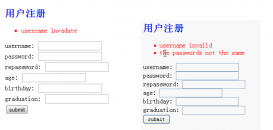一、
首先我们先大致了解一下什么是多线程。(书上的解释)
程序是一段静态的代码,它是应用软件的蓝本。进程是程序的一次动态执行过程,对应了从代码加载执行,执行到执行完毕的一个完整的过程。
线程不是进程,线程是比进程更小的执行单位,一个进程在其执行过程中,可以产生多个线程形成多条执行线索,每条线索即每个线程也有它自身的产生,存在,消亡的过程,和进程共享操作系统的资源类似,线程间也可以共享进程中的某些内存单元,并利用这些共享单元来实现数据交换,实时通信与必要的同步操作,但与进程不同的是线程的中断和恢复更加节省开支。线程是运行在进程中的“小进程”。
多线程是指一个应用程序中同时存在几个执行体,按几条不同的执行线索共同工作的情况。虽然看似是几个事件同时发生,但其实计算机在任何给定时刻只能执行那些线程中的一个。为了建立这些线程在同步进行的感觉,java虚拟机快速的把控制从一个线程切换到另一个线程。这些线程将被轮流执行,使得每个线程都有机会使用cpu资源。
二、
利用单线程实现的简易微信发红包
共写有三种方法,其中第一种,第二种未设置范围,红包数和人数为一一对应,第三种增添了取值范围以及计数器,人多红包少有未抢到现象发生。
(1) 方法一
|
1
2
3
4
5
6
7
8
9
10
11
12
13
14
15
16
17
18
19
20
21
22
23
24
25
26
27
28
29
30
31
32
33
34
35
36
37
38
39
40
41
42
43
44
45
46
47
48
49
50
51
52
53
54
55
56
57
58
59
60
61
62
63
64
65
66
67
68
69
70
71
72
73
74
75
76
77
78
79
80
81
82
|
import java.util.scanner;import com.sun.deploy.security.selectablesecuritymanager;import java.util.random;public class 简易微信发红包 { public static void main(string[] args) { scanner scanner=new scanner(system.in); int n; double money; system.out.println("请输入您想要发的红包数量"); n=scanner.nextint(); system.out.println("请输入您发送的红包金额"); money=scanner.nextdouble(); t2 t2=new t2(n,money); t2.rob(); }}class t2 { public double remain;//有红包被领取后的余额 int n;//红包数量 t2(int n,double money) { this.remain=money; this.n=n; } int a=1; public void rob() { while (n > 0) { double x2; if (n != 1) {//因为最后一个人领取金额为前面人领取红包后剩下的,所以无需再进行随机 x2 = process();//取随机金额 while (judge(x2) != 1) {//判断取到的随机金额是否非法,即无法保证后来每个红包领取者领到最低金额0.01 x2 = process();//若非法则重新取随机金额 } remain = remain - x2;//当领取成功后余额减去领走的金额 n--;//确保每次判断人数为所剩红包数减1 system.out.println("红包获得者" + a + "获得" + x2 + "元");//此处默认领取者顺序为升序 a++;//控制输出顺序 } else { x2 = remain;//因为最后一个人领取金额为前面人领取红包后剩下的,所以无需再进行随机 string str = string.valueof(x2); string str1 = string.format("%.2f", x2); x2 = double.parsedouble(str1); system.out.println("红包获得者" + a + "获得" + x2 + "元"); n--;//确保每次判断人数为所剩红包数减1 } } } public int judge(double x){//判断函数 if(remain-x>(n-1)*0.01){//确保后来红包领取者最少能领到最低金额0.01 return 1; } else return 0; } public double process() {//实现红包金额随机的函数 double x2; double x1; string str1; random random = new random();//随机数为取0到1之间的任意double值 x1 = remain*random.nextdouble(); str1= string.format("%.2f",x1);//转化成字符串型用字符串型的format进行格式化处理,红包金额最多取到小数点后两位 x2=double.parsedouble(str1);//再将字符串型数据转换成double型 while(x2==0){//如果所取金额非法则回炉重造 x1 = remain*random.nextdouble(); str1= string.format("%.2f",x1);//转化成字符串型用字符串型的format进行格式化处理,红包金额最多取到小数点后两位 x2=double.parsedouble(str1);//再将字符串型数据转换成double型 } return x2; }} |
程序运行结果如下

(2) 方法二
|
1
2
3
4
5
6
7
8
9
10
11
12
13
14
15
16
17
18
19
20
21
22
23
24
25
26
27
28
29
30
31
32
33
34
35
36
37
38
39
40
41
42
43
44
45
46
47
48
49
50
51
52
53
54
55
56
57
58
59
60
61
62
63
64
65
66
67
68
69
70
71
72
73
74
75
76
|
import java.util.random;import java.util.scanner;public class 简易微信发红包2 { public static void main(string[] args) { scanner scanner=new scanner(system.in); double money=0;//红包总金额 int n;//红包个数 system.out.println("请输入您想要发的红包数量"); n=scanner.nextint(); system.out.println("请输入您发送的红包金额"); money=scanner.nextdouble(); if(money/n==0.01){//当所发金额刚好为每人0.01元时 t6 t6=new t6(money,n); t6.rob(); }else{ t5 t5=new t5(money,n); t5.rob(); } }}class t5{ double remain; int n; t5(double money,int n){ this.remain=money; this.n=n; } int a=1; public void rob(){ double max;//最大可领红包金额 double x1;//随机金额 double x2;//所得金额while(n>0) { if (n != 1) {//前n-1个红包领取者领的红包为随机金额红包 max = remain - (n - 1) * 0.01;//最大可领红包金额为剩下的人都获得最小金额0.01 random random = new random(); x1 = (double) random.nextint((int) ((max - 0.01) * 100)); //用nextint而不用nextdouble的原因是nextdouble无法设置seed //上式中max-0.01,下面的x2+0.01即解决了随机数取0导致红包获得者没抢到钱的问题 x1 /= 100.0; x2 = x1 + 0.01; remain = remain - x2; n--; system.out.println("红包获得者" + a + "获取金额为:" + string.format("%.2f", x2) + "元"); a++; } else {//最后一人领的红包为前n-1个人领完后剩下的红包 system.out.println("红包获得者" + a + "获取金额为:" + string.format("%.2f", remain) + "元"); n--; }}} }class t6 { double remain; int n; t6(double money,int n){ this.remain=money; this.n=n; } public void rob(){ for(int i=1;i<=n;i++){ system.out.println("红包获得者"+i+"获得了0.01元"); } }} |
程序运行结果如下:


(3) 方法三
|
1
2
3
4
5
6
7
8
9
10
11
12
13
14
15
16
17
18
19
20
21
22
23
24
25
26
27
28
29
30
31
32
33
34
35
36
37
38
39
40
41
42
43
44
45
46
47
48
49
50
51
52
53
54
55
56
57
58
59
60
61
62
63
64
|
import java.util.random;import java.util.scanner;public class 简易微信发红包3 { public static void main(string[] args) { int p,n; double money; system.out.println("请输入您发送的红包金额"); scanner scanner=new scanner(system.in); money=scanner.nextdouble(); system.out.println("请输入您发送的红包数量"); n=scanner.nextint(); system.out.println("请输入参与抢红包的人数"); p=scanner.nextint(); t7 t7=new t7(money,n,p); t7.rob(); }}class t7 { double money; int n,p; int count =0;//计数器 double remain; t7(double money,int n,int p){ this.money=money;//总金额 this.n=n;//红包数 this.p=p;//抢红包人数 this.remain=money;//所剩金额 } public void rob() { for(int i=1;i<=p;i++) { double x1, x2, d; string s1, s2; random random = new random(); d = money / (n - 1);//设置范围让每次所得金额不超过总数的1/(n-1),这样也就避免了一次取得过大导致后面抢的红包不能保证每个最少0.01 x1 = d * random.nextdouble(); s1 = string.format("%.2f", x1);//转化成字符串型用字符串型的format进行格式化处理,红包金额最多取到小数点后两位 x1 = double.parsedouble(s1);//再将字符串型数据转换成double型 while (x1 == 0 || x1 == money / (n - 1)) { x1 = d * random.nextdouble(); s1 = string.format("%.2f", x1);//转化成字符串型用字符串型的format进行格式化处理,红包金额最多取到小数点后两位 x1 = double.parsedouble(s1);//再将字符串型数据转换成double型 } s2 = string.format("%.2f", remain);//转化成字符串型用字符串型的format进行格式化处理,红包金额最多取到小数点后两位 remain = double.parsedouble(s2);//再将字符串型数据转换成double型 if (count < n - 1) {//前n-1个红包金额为随机金额 system.out.println( "红包抢夺者"+i+ "抢到了" + s1 + "元"); remain -= x1; count++; } else if (count == n - 1) {//第n个为前n-1个红包抢完所剩金额 system.out.println( "红包抢夺者"+i+ "抢到了" + s2 + "元"); count++; } else if (count > n - 1) {//红包被抢完后再来的 system.out.println( "红包抢夺者"+i+ "哎呀,手慢了!没抢到!"); count++; } } }} |
程序运行结果如下:

三、
利用多线程实现的简易微信发红包
那么如何创建多线程呢?
1.通过继承thread类创建多线程
jdk中提供了一个线程类thread,通过继承thread类,并重写thread类中的run()方法便可实现多线程。
在thread类中,提供了一个start()方法用于启动新线程,线程启动后,系统会自动调用run()方法,如果子类重写了该方法便会执行子类中的方法。
run()方法中就是写能够被线程执行的程序。如果直接调用则相当于普通方法,必须使用start()方法,才能启动线程,然后再由jvm去调用该线程的run()方法。
创建并启动多线程的步骤
①定义thread类的子类,并重写该类的run方法,其方法体代表线程需要完成的任务。因此常把run方法称为线程执行体。
②创建thread子类的实例,即创建线程对象。
③用线程对象的start方法来启动该线程。
2.通过实现runnable接口创建多线程
通过继承thread类实现了多线程,但是这种方式有一定的局限性。因为java中只支持单继承,一个类一旦继承了某个父类就无法再继承thread类。
thread类提供了另外一个构造方法thread(runnable target),其中runnable是一个接口,它只有一个run()方法。
当通过thread(runnable target))构造方法创建线程对象时,只需为该方法传递一个实现了runnable接口的实例对象,这样创建的线程将调用实现了runnable接口中的run()方法作为运行代码,而不需要调用thread类中的run()方法。
创建并启动多线程的步骤
①定义runnable接口的实现类,并重写该接口的run方法,该run方法的方法体同样是该线程的线程执行体。
②创建runnable实现类的实例,并以此为实例作为thread的参数来创建thread对象,该thread对象才是真正的线程对象。
当多个线程使用同一个共享资源时,可以将处理共享资源的代码放置在一个代码块中,使用synchronized关键字来修饰,被称作同步代码块:
sychronized(lock){
操作共享资源代码块
}
其中:lock是一个锁对象,它是同步代码块的关键。当线程执行同步代码块时,首先会检查锁对象的标志位,默认情况下,标志位为1,此时线程会执行同步代码块,同时将锁对象的标志位置为0。当一个新的线程执行到这段同步代码块时,由于锁对象的标志位为0,新线程会发生阻塞,等待当前线程执行完同步代码块后,锁对象的标志位被置为1,新线程才能进入同步代码块执行其中的代码。循环往复,直到共享资源被处理完为止。
同步代码块可以有效解决线程的安全问题,当把共享资源的操作放在synchronized定义的区域内时,便为这些操作加了同步锁。
在方法前面同样可以使用synchronized关键字来修饰,被修饰的方法为同步方法,它能实现和同步代码块同样的功能,具体语法格式如下:
synchronized 返回值类型 方法名 {}
被synchronized修饰的方法在某一时刻只允许一个线程访问,访问该方法的其它线程都会发生阻塞,直到当前线程访问完毕后,其它线程才有机会执行方法。
另外
public final string getname():获取线程的名称。
public static thread currentthread():返回当前正在执行的线程对象,这样就可以获取任意方法所在的线程名称。
thread.currentthread().getname()
现将上面的单线程改成多线程实现
本篇文章多线程的创建以及实现用runnable接口实现
(1)
|
1
2
3
4
5
6
7
8
9
10
11
12
13
14
15
16
17
18
19
20
21
22
23
24
25
26
27
28
29
30
31
32
33
34
35
36
37
38
39
40
41
42
43
44
45
46
47
48
49
50
51
52
53
54
55
56
57
58
59
60
61
62
63
64
65
66
67
68
69
70
71
72
73
74
75
76
77
78
79
80
81
82
83
84
85
86
87
|
import java.util.scanner;import com.sun.deploy.security.selectablesecuritymanager;import java.util.random;public class 微信发红包多线程 { public static void main(string[] args) { scanner scanner=new scanner(system.in); int n; double money; system.out.println("请输入您想要发的红包数量"); n=scanner.nextint(); system.out.println("请输入您发送的红包金额"); money=scanner.nextdouble(); t3 t3=new t3(n,money);//创建runnable实现类的实例 for (int j = 1; j <= n; j++) { new thread(t3, "红包获得者" + j).start();//以上面创建的实例作为thread的参数来创建thread对象,并为thread对象指定一个名字,用线程对象的start方法来启动该线程。 } }}class t3 implements runnable {//实现runnable接口 public double remain;//有红包被领取后的余额 int n;//红包数量 public synchronized void run() {//同步方法,在某一时刻只允许一个线程访问,防止数据错乱 rob(); } t3(int n, double money) { this.remain = money; this.n = n; } int a = n; public void rob() { double x2; if (n != 1) {//因为最后一个人领取金额为前面人领取红包后剩下的,所以无需再进行随机 x2 = process();//取随机金额 while (judge(x2) != 1) {//判断取到的随机金额是否非法,即是否能保证后来每个红包领取者领到最低金额0.01 x2 = process();//若非法则重新取随机金额 } remain = remain - x2;//当领取成功后余额减去领走的金额 n--; //确保每次判断人数为红包数减一 } else { x2 = remain;//因为最后一个人领取金额为前面人领取红包后剩下的,所以无需再进行随机 string str = string.valueof(x2); string str1 = string.format("%.2f", x2); x2 = double.parsedouble(str1); } thread th = thread.currentthread();//返回当前正在执行的线程对象 string th_name = th.getname();//获取线程的名称 system.out.println(th_name + "抢到" + x2 + "元"); } public int judge(double x) {//判断函数 if (remain - x > (n - 1) * 0.01) {//确保后来红包领取者能领到最低金额0.01 return 1; } else return 0; } public double process() {//实现红包金额随机的函数 double x2; double x1; string str1; random random = new random();//随机数为取0到1之间的任意double值 x1 = remain * random.nextdouble(); str1 = string.format("%.2f", x1);//转化成字符串型用字符串型的format进行格式化处理,红包金额最多取到小数点后两位 x2 = double.parsedouble(str1);//再将字符串型数据转换成double型 while (x2 == 0) {//如果所取金额非法则回炉重造 x1 = remain * random.nextdouble(); str1 = string.format("%.2f", x1);//转化成字符串型用字符串型的format进行格式化处理,红包金额最多取到小数点后两位 x2 = double.parsedouble(str1);//再将字符串型数据转换成double型 } return x2; }} |
程序运行结果如下:

(2)
|
1
2
3
4
5
6
7
8
9
10
11
12
13
14
15
16
17
18
19
20
21
22
23
24
25
26
27
28
29
30
31
32
33
34
35
36
37
38
39
40
41
42
43
44
45
46
47
48
49
50
51
52
53
54
55
56
57
58
59
60
61
62
63
64
65
66
67
68
69
70
71
72
73
74
75
76
77
78
79
80
81
82
83
84
85
|
import java.util.random;import java.util.scanner;public class 简易微信发红包多线程2 { public static void main(string[] args) { scanner scanner=new scanner(system.in); double money=0;//红包总金额 int n;//红包个数 system.out.println("请输入您想要发的红包数量"); n=scanner.nextint(); system.out.println("请输入您发送的红包金额"); money=scanner.nextdouble(); if(money/n==0.01){//当所发金额刚好为每人0.01元时 t4 t4=new t4(money,n); for(int i=1;i<=n;i++) { new thread(t4,"红包获得者"+i).start(); } }else{ t1 t1=new t1(money,n); for(int i=1;i<=n;i++) { new thread(t1,"红包获得者"+i).start(); } } }}class t1 implements runnable{ double remain; int n; t1(double money,int n){ this.remain=money; this.n=n; } @override public synchronized void run() { rob(); } public void rob(){ double max;//最大可领红包金额 double x1;//随机金额 double x2;//所得金额 if(n!=1) {//前n-1个红包领取者领的红包为随机金额红包 max=remain-(n-1)*0.01;//最大可领红包金额为剩下的人都获得最小金额0.01 random random=new random(); x1=(double)random.nextint((int) ((max-0.01)*100)); //用nextint而不用nextdouble的原因是nextdouble无法设置seed //上式中max-0.01,下面的x2+0.01即解决了随机数取0导致红包获得者没抢到钱的问题 x1/=100.0; x2=x1+0.01; remain=remain-x2; n=n-1; thread th=thread.currentthread();//获取当前线程 string th_name=th.getname();//获取线程名字 system.out.println(th_name+"获取金额为:"+string.format("%.2f", x2)+"元"); } else {//最后一人领的红包为前n-1个人领完后剩下的红包 thread th=thread.currentthread();//获取当前线程 string th_name=th.getname();//获取线程名字 system.out.println(th_name+"获取金额为:"+string.format("%.2f", remain)+"元"); } }}class t4 implements runnable{ double remain; int n; t4(double money,int n){ this.remain=money; this.n=n; } public synchronized void run() { rob(); } public void rob(){ thread th=thread.currentthread();//获取当前线程 string th_name=th.getname();//获取线程名字 system.out.println(th_name+"获取金额为:"+string.format("%.2f", remain/n)+"元"); }} |
程序运行结果如下:


(3)
|
1
2
3
4
5
6
7
8
9
10
11
12
13
14
15
16
17
18
19
20
21
22
23
24
25
26
27
28
29
30
31
32
33
34
35
36
37
38
39
40
41
42
43
44
45
46
47
48
49
50
51
52
53
54
55
56
57
58
59
60
61
62
63
64
65
66
67
68
69
|
import java.util.random;import java.util.scanner;public class 简易微信发红包多线程3 { public static void main(string[] args) { int p,n; double money; system.out.println("请输入您发送的红包金额"); scanner scanner=new scanner(system.in); money=scanner.nextdouble(); system.out.println("请输入您发送的红包数量"); n=scanner.nextint(); system.out.println("请输入参与抢红包的人数"); p=scanner.nextint(); hh hh=new hh(money,n); for (int i=1;i<=p;i++){ new thread(hh,"第"+i+"个人").start(); } }}class hh implements runnable{ double money; int n; int count =0;//计数器 double remain; hh(double money,int n){ this.money=money;//总金额 this.n=n;//红包数 this.remain=money;//所剩金额 } @override public synchronized void run() { rob(); } public void rob(){ double x1,x2,d; string s1,s2; thread th=thread.currentthread();//获取当前线程 string th_name=th.getname();//获取线程名字 random random=new random(); d=money/(n-1);//设置范围让每次所得金额不超过总数的1/(n-1),这样也就避免了一次取得过大导致后面抢的红包不能保证每个最少0.01 x1=d*random.nextdouble(); s1=string.format("%.2f",x1);//转化成字符串型用字符串型的format进行格式化处理,红包金额最多取到小数点后两位 x1 = double.parsedouble(s1);//再将字符串型数据转换成double型 while(x1==0||x1==money/(n-1)){ x1=d*random.nextdouble(); s1=string.format("%.2f",x1);//转化成字符串型用字符串型的format进行格式化处理,红包金额最多取到小数点后两位 x1 = double.parsedouble(s1);//再将字符串型数据转换成double型 } s2= string.format("%.2f",remain);//转化成字符串型用字符串型的format进行格式化处理,红包金额最多取到小数点后两位 remain = double.parsedouble(s2);//再将字符串型数据转换成double型 if (count<n-1){//前n-1个红包金额为随机金额 system.out.println(th_name+"抢到了"+s1+"元"); remain-=x1; count++; }else if (count==n-1){//第n个为前n-1个红包抢完所剩金额 system.out.println(th_name+"抢到了"+s2+"元"); count++; }else if (count>n-1){//红包被抢完后再来的 system.out.println(th_name+"哎呀,手慢了!没抢到!"); count++; } }} |
程序运行结果如下:

总结
新手上路,因能力有限,若有不足之处还望大家海涵!
到此这篇关于java多线程实现简易微信发红包的文章就介绍到这了,更多相关java多线程实现微信发红包内容请搜索服务器之家以前的文章或继续浏览下面的相关文章希望大家以后多多支持服务器之家!
原文链接:https://blog.csdn.net/weixin_46569912/article/details/113308600

















